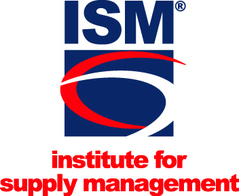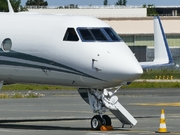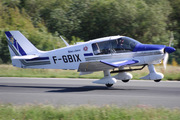Dépêches
Economic Growth Continues in 2012
Dépèche transmise le 6 décembre 2011 par Business Wire

Economic Growth Continues in 2012
TEMPE, Ariz.--(BUSINESS WIRE)--Economic growth in the United States will continue in 2012, say the nation’s purchasing and supply management executives in their December 2011 Semiannual Economic Forecast. Expectations are for a continuation of the economic recovery that began in mid-2009, as indicated in the monthly ISM Report On Business®. The forecast projects optimism about the U.S. economy for 2012. The manufacturing sector, overall, is positive about prospects in 2012 with revenues expected to increase in 17 industries, while the non-manufacturing sector appears slightly less positive about the year ahead, with 15 industries expecting higher revenues. Capital expenditures, a major driver in the U.S. economy, however, will increase only modestly in the manufacturing sector, while investment in the non-manufacturing sector will remain essentially flat.
“Manufacturing purchasing and supply executives expect to see continued growth in 2012. They are optimistic about their overall business prospects for the first half of 2012, and are even more optimistic about the second half of 2012”
These projections are part of the forecast issued by the Business Survey Committee of the Institute for Supply Management™ (ISM). The forecast was released today by Bradley J. Holcomb, CPSM, CPSD, chair of the ISM Manufacturing Business Survey Committee; and by Anthony S. Nieves, C.P.M., CFPM, chair of the ISM Non-Manufacturing Business Survey Committee.
Manufacturing Summary
Expectations for 2012 are positive as 69 percent of survey respondents expect revenues to be greater in 2012 than in 2011. The panel of purchasing and supply executives expects a 5.5 percent net increase in overall revenues for 2012, compared to a 7 percent increase reported for 2011 over 2010 revenues. The following 17 manufacturing industries expecting revenue improvement over 2011 — listed in order — are: Computer & Electronic Products; Machinery; Petroleum & Coal Products; Wood Products; Nonmetallic Mineral Products; Electrical Equipment, Appliances & Components; Apparel, Leather & Allied Products; Furniture & Related Products; Transportation Equipment; Paper Products; Printing & Related Support Activities; Plastics & Rubber Products; Food, Beverage & Tobacco Products; Primary Metals; Fabricated Metal Products; Chemical Products; and Miscellaneous Manufacturing.
“Manufacturing purchasing and supply executives expect to see continued growth in 2012. They are optimistic about their overall business prospects for the first half of 2012, and are even more optimistic about the second half of 2012," said Holcomb. "Manufacturing has demonstrated its resilience throughout this challenging economic recovery period with consistent growth dating back to August of 2009 (as indicated in the monthly ISM Report On Business®), and our forecast calls for a continuation of that growth in 2012. Respondents expect raw materials pricing pressures in 2012 to be less than they were in 2011, and expect their margins will improve. Manufacturing is now in its 28th consecutive month of growth as measured by and reported in the monthly Manufacturing ISM Report On Business®.”
In the manufacturing sector, respondents report operating at 79.2 percent of their normal capacity, down from 83.2 percent reported in April 2011. Purchasing and supply executives predict that capital expenditures will increase by 1.9 percent in 2012 over 2011, compared to an 11 percent increase reported for 2011 over 2010. Survey respondents also forecast that they will reduce inventories by 1.2 percent in an effort to improve their purchased inventory-to-sales ratio in 2012. Manufacturers have an expectation that employment in the sector will increase by 1.3 percent, while labor and benefit costs are expected to increase an average of 2.4 percent in 2012. Manufacturing purchasers are predicting growth in exports and imports in 2012. Respondents also expect the U.S. dollar to weaken very slightly on average against the currencies of major trading partners.
The panel also predicts the prices they pay for raw materials will increase 2 percent during the first four months of 2012, and will increase an additional 0.9 percent during the balance of the year, with an overall increase of 2.9 percent for 2012. This compares to a reported 5.7 percent increase in raw materials prices for 2011 compared with 2010.
Survey respondents report that the most challenging problems facing their businesses as they plan for 2012 are: poor sales (43.9 percent); government regulations (22 percent); inflation (17.4 percent); cost of labor (4.5 percent); quality of labor (4.5 percent); taxes (4.5 percent); and interest rates and finance (3 percent).
The panel also indicated that supply chain management practices will be improved in 2012 using the following strategies, listed in order: supplier performance management; strategic sourcing/supply base rationalization; demand planning/supplier lead time reduction; inventory management and control; and process and information systems improvements.
Non-Manufacturing Summary
Fifty-eight percent of non-manufacturing supply management executives expect their 2012 revenues to be greater than in 2011. They currently expect a 3.1 percent net increase in overall revenues for 2012 compared to a 1.5 percent increase reported for 2011 over 2010 revenues. The 15 non-manufacturing industries expecting revenue improvement in 2012 over 2011 — listed in order — are: Professional, Scientific & Technical Services; Mining; Construction; Other Services; Wholesale Trade; Agriculture, Forestry, Fishing & Hunting; Information; Retail Trade; Transportation & Warehousing; Arts, Entertainment & Recreation; Accommodation & Food Services; Real Estate, Rental & Leasing; Finance & Insurance; Utilities; and Public Administration.
“Non-manufacturing supply managers report operating at 85.2 percent of their normal capacity, more than the 83.7 percent reported in April 2011. They are optimistic about continued growth in the first half of 2012 compared to the second half of 2011, and they have a higher level of optimism about the next 12 months than they had last December for 2011,” said Nieves. “They forecast that their capacity to produce products and provide services will rise by 3.2 percent during 2012, and capital expenditures will increase by 0.1 percent from the 2011 level. Non-manufacturers also predict their employment will increase by 1.1 percent during 2012.”
Respondents in non-manufacturing industries expect the prices they pay for materials and services will increase by 2.7 percent during 2012. They also forecast their overall labor and benefit costs will increase 1.8 percent in 2012. Profit margins are reported to have decreased in the second and third quarters of 2011, and respondents expect them to increase between now and April 2012.
Survey respondents report that the most challenging problems facing their businesses as they plan for 2012 are: poor sales (34.4 percent); government regulations (26.4 percent); inflation (10.4 percent); interest rates and finance (9.6 percent); cost of labor (8.8 percent); taxes (5.6 percent); and quality of labor (4.8 percent).
Survey respondents indicate that process improvement is the most frequently cited means of improving supply chains in 2012. Other improvement approaches include: Leverage of new and existing technology; contract management; professional development; and strategic sourcing.
OPERATING RATE
Manufacturing
Manufacturing purchasing and supply executives report their companies are currently operating at 79.2 percent of normal capacity. This is a modest decrease when compared to April 2011 (83.2 percent) and December 2010 (80.2 percent). The November data from the Manufacturing ISM Report On Business® indicates the manufacturing sector is in its 28th consecutive month of growth. The following nine industries — listed in order — are operating above the average rate of 79.2 percent: Wood Products; Paper Products; Miscellaneous Manufacturing; Plastics & Rubber Products; Fabricated Metal Products; Chemical Products; Food, Beverage & Tobacco Products; Printing & Related Support Activities; and Apparel, Leather & Allied Products.
Non-Manufacturing
Non-manufacturing supply executives report their organizations are currently operating at 85.2 percent of normal capacity. This is higher than the 83.7 percent reported in April 2011, and higher than the 82.9 percent reported in December 2010. Considering production capacity increases reported in the following section of this forecast, this indicates that non-manufacturing industries are continuing to add capacity, but also find it necessary to maintain their utilization of capacity at a relatively high level. The following eight industries — listed in order — are operating at or above the average capacity level of 85.2 percent: Information; Educational Services; Other Services; Transportation & Warehousing; Utilities; Real Estate, Rental & Leasing; Public Administration; and Health Care & Social Assistance.
|
Operating Rate |
||||||||||||||||||||
| Manufacturing | Non-Manufacturing | |||||||||||||||||||
|
Dec |
April |
Dec |
Dec |
April |
Dec |
|||||||||||||||
| 90%+ | 36% | 47% | 36% | 45% | 49% | 52% | ||||||||||||||
| 50%-89% | 60% | 50% | 60% | 52% | 49% | 47% | ||||||||||||||
| Below 50% | 4% | 3% | 4% | 3% | 2% | 1% | ||||||||||||||
| Est. Overall Average | 80.2% | 83.2% | 79.2% | 82.9% | 83.7% | 85.2% | ||||||||||||||
PRODUCTION CAPACITY
Manufacturing
Production capacity in manufacturing increased 4.6 percent in 2011 as 44 percent of purchasing and supply executives reported an average capacity increase of 13.2 percent, 9 percent reported decreases averaging 13 percent, and 47 percent reported no change. This compares to a predicted increase of 8.1 percent for 2011 made in April 2011. Expectations for 2012 are for an increase of 5.6 percent. The following 13 industries report achieving an increase in production capacity in 2011: Fabricated Metal Products; Transportation Equipment; Machinery; Wood Products; Computer & Electronic Products; Electrical Equipment, Appliances & Components; Miscellaneous Manufacturing; Nonmetallic Mineral Products; Food, Beverage & Tobacco Products; Printing & Related Support Activities; Apparel, Leather & Allied Products; Paper Products; and Chemical Products.
| Manufacturing Production Capacity | |||||||||||||||
| For 2011 | For 2011 | For 2012 | |||||||||||||
|
Predicted |
Magnitude |
Reported |
Magnitude |
Predicted |
Magnitude |
||||||||||
| Higher | 45% | +18.6% | 44% | +13.2% | 47% | +12.5% | |||||||||
| Same | 52% | NA | 47% | NA | 48% | NA | |||||||||
| Lower | 3% | -10.3% | 9% | -13% | 5% | -6.2% | |||||||||
| Net Average | +8.1% | +4.6% | +5.6% | ||||||||||||
The principal means of achieving increases in production capacity in 2011 were (in order of importance):
1. Additional plant and/or equipment
2. More hours worked with existing personnel
3. Additional personnel (permanent, temporary or contract)
4. Fewer shutdowns of operations or facilities.
Non-Manufacturing
The capacity to produce products or provide services in the non-manufacturing sector increased 1.1 percent during 2011. This compares to the 0.5 percent increase reported in December 2010 for the year 2010, and is less than the prediction in April 2011 of a 2 percent increase for 2011. For 2012, an increase of 3.2 percent is predicted. For 2011, 23 percent of non-manufacturing supply managers indicate increases averaging 12.4 percent, and 9 percent of respondents indicate decreases averaging 16.8 percent. Sixty-eight percent see no change in their capacity. The 11 industries reporting increases in capacity in 2011 — listed in order — are: Information; Professional, Scientific & Technical Services; Mining; Wholesale Trade; Transportation & Warehousing; Utilities; Accommodation & Food Services; Management of Companies & Support Services; Other Services; Retail Trade; and Public Administration.
| Non-Manufacturing Production or Provision Capacity | |||||||||||||||
| For 2011 | For 2011 | For 2012 | |||||||||||||
|
Predicted |
Magnitude |
Reported |
Magnitude |
Predicted |
Magnitude |
||||||||||
| Higher | 24% | +10.2% | 23% | +12.4% | 39% | +9.0% | |||||||||
| Same | 72% | NA | 68% | NA | 58% | NA | |||||||||
| Lower | 4% | -11.0% | 9% | -16.8% | 3% | -8.5% | |||||||||
| Net Average | +2.0% | +1.1% | +3.2% | ||||||||||||
The principal means of achieving increases in production capacity in 2011 were (in order of importance):
1. More hours worked with existing personnel
2. Additional personnel (permanent, temporary or contract)
3. Additional plant and/or equipment
4. Replaced equipment with technically advanced equipment.
CAPITAL EXPENDITURES — 2011 vs. 2010
Manufacturing
Purchasing and supply managers report 2011 capital expenditures increased 11 percent on average when compared to 2010 levels. The actual expenditures for 2011 were significantly below survey respondents’ previous expectations, as they predicted an increase of 17.9 percent for 2011 in April 2011. The 47 percent of purchasers who reported increased capital expenditures in 2011 indicated an average increase of 31.7 percent, while the 16 percent who said their capital spending was reduced reported an average decrease of 23.9 percent. Thirty-seven percent of respondents said they spent the same in 2011 as in 2010. The 12 industries showing increases in capital expenditures for 2011 — in order of percentage increase — are: Petroleum & Coal Products; Machinery; Fabricated Metal Products; Transportation Equipment; Printing & Related Support Activities; Paper Products; Plastics & Rubber Products; Electrical Equipment, Appliances & Components; Food, Beverage & Tobacco Products; Chemical Products; Nonmetallic Mineral Products; and Computer & Electronic Products.
Non-Manufacturing
Non-manufacturing supply management executives report their level of capital expenditures in 2011 compared to 2010 increased 4 percent. This compares to the 0.1 percent decrease reported for 2010 one year ago, and is less than the 1.4 percent increase predicted by respondents in April 2011. Thirty-six percent of respondents report increases averaging 22.4 percent. An additional 23 percent report decreases averaging 17.9 percent. Forty-one percent indicate they spent the same on capital expenditures in 2011 as in 2010. The 11 industries experiencing increases in capital expenditures in 2011 — listed in order — are: Mining; Transportation & Warehousing; Information; Educational Services; Other Services; Real Estate, Rental & Leasing; Wholesale Trade; Public Administration; Retail Trade; Finance & Insurance; and Accommodation & Food Services.
| Capital Expenditures 2011 vs. 2010 | ||||||||||||||
| Manufacturing | Non-Manufacturing | |||||||||||||
|
Predicted |
Reported |
Magnitude |
Predicted |
Reported |
Magnitude |
|||||||||
| Higher | 39% | 47% | +31.7% | 28% | 36% | +22.4% | ||||||||
| Same | 50% | 37% | NA | 47% | 41% | NA | ||||||||
| Lower | 11% | 16% | -23.9% | 25% | 23% | -17.9% | ||||||||
| Net Average | +17.9% | +11.0% | +1.4% | +4.0% | ||||||||||
PREDICTED CAPITAL EXPENDITURES — 2012 vs. 2011
Manufacturing
Purchasing and supply executives expect capital expenditures to increase 1.9 percent in 2012. The 42 percent of respondents who predict increased capital expenditures in 2012 indicate an average increase of 19.9 percent, while the 16 percent who said their capital spending would be reduced predict an average decrease of 37.6 percent. Forty-two percent said they expect to spend the same in 2012 as in 2011. The 13 industries predicting increases in capital expenditures for 2012 — in order of percentage increase — are: Petroleum & Coal Products; Fabricated Metal Products; Furniture & Related Products; Nonmetallic Mineral Products; Transportation Equipment; Electrical Equipment, Appliances & Components; Printing & Related Support Activities; Primary Metals; Miscellaneous Manufacturing; Food, Beverage & Tobacco Products; Plastics & Rubber Products; Chemical Products; and Computer & Electronic Products.
Non-Manufacturing
Non-manufacturing purchasing and supply executives are expecting an increase of 0.1 percent in capital expenditures in 2012, significantly less than the increase of 4 percent they are reporting for 2011. The 37 percent of respondents expecting to spend more on capital expenditures predict an average increase of 14.3 percent. An additional 24 percent anticipate a decrease averaging 22.2 percent. Thirty-nine percent expect to spend the same on capital expenditures in 2012 as in 2011. The seven industries expecting increases in capital expenditures in 2012 — in order of percentage increase — are: Accommodation & Food Services; Mining; Utilities; Professional, Scientific & Technical Services; Construction; Wholesale Trade; and Retail Trade.
| Predicted Capital Expenditures 2012 vs. 2011 | ||||||||||||||||
| Manufacturing | Non-Manufacturing | |||||||||||||||
|
Predicted
Dec 2011 |
Magnitude
of Change |
Predicted
Dec 2011 |
Magnitude
of Change |
|||||||||||||
| Higher | 42% | +19.9% | 37% | +14.3% | ||||||||||||
| Same | 42% | NA | 39% | NA | ||||||||||||
| Lower | 16% | -37.6% | 24% | -22.2% | ||||||||||||
| Net Average | +1.9% | +0.1% | ||||||||||||||
PRICES — Changes Between End of 2010 and End of 2011
Manufacturing
After an initial forecast in April 2011 of a 7.4 percent increase in prices paid for 2011, survey respondents now report realized price increases averaging 5.7 percent for the year. The 76 percent who say their prices are higher now than at the end of 2010 report an average increase of 8.5 percent, while the 14 percent who report lower prices averaged a 4.6 percent decrease. The remaining 10 percent indicate no change between the end of 2010 and the end of 2011. The 16 industries experiencing price increases — listed in order — are: Petroleum & Coal Products; Machinery; Food, Beverage & Tobacco Products; Primary Metals; Apparel, Leather & Allied Products; Chemical Products; Electrical Equipment, Appliances & Components; Furniture & Related Products; Printing & Related Support Activities; Transportation Equipment; Paper Products; Fabricated Metal Products; Miscellaneous Manufacturing; Wood Products; Nonmetallic Mineral Products; and Computer & Electronic Products.
| Manufacturing Price Changes Between End of 2010 and End of 2011 | |||||||||||||||
|
Predicted |
Magnitude |
Predicted |
Magnitude |
Reported |
Magnitude |
||||||||||
| Higher | 75% | +6.1% | 83% | +9.1% | 76% | +8.5% | |||||||||
| Same | 14% | NA | 12% | NA | 10% | NA | |||||||||
| Lower | 11% | -5.4% | 5% | -4.1% | 14% | -4.6% | |||||||||
| Net Average | +4.0% | +7.4% | +5.7% | ||||||||||||
Non-Manufacturing
As 2011 draws to a close, non-manufacturing supply managers report prices they pay have increased by 2.8 percent over the entire year. This is less than the 4.7 percent increase they predicted in April 2011, and significantly more than the 2.2 percent decrease reported one year ago for 2010. Sixty-five percent of purchasers report price increases averaging 5.4 percent. Twelve percent of purchasers indicate decreased prices with an average reduction of 6.3 percent, and 23 percent of respondents have not experienced overall price changes this year. The 17 industries reporting price increases in 2011 — listed in order — are: Arts, Entertainment & Recreation; Real Estate, Rental & Leasing; Wholesale Trade; Agriculture, Forestry, Fishing & Hunting; Accommodation & Food Services; Utilities; Professional, Scientific & Technical Services; Mining; Health Care & Social Assistance; Public Administration; Other Services; Finance & Insurance; Educational Services; Retail Trade; Transportation & Warehousing; Management of Companies & Support Services; and Information.
| Non-Manufacturing Price Changes Between End of 2010 and End of 2011 | |||||||||||||||
|
Predicted |
Magnitude |
Predicted |
Magnitude |
Reported |
Magnitude |
||||||||||
| Higher | 71% | 81% | +6.4% | 65% | +5.4% | ||||||||||
| Same | 21% | NA | 12% | NA | 23% | NA | |||||||||
| Lower | 8% | 7% | -7.4% | 12% | -6.3% | ||||||||||
| Net Average | +4.7% | +2.8% | |||||||||||||
PRICES – Predicted Changes Between End of 2011 and April 2012
Manufacturing
Sixty-three percent of purchasing and supply managers expect the prices they pay to increase in early 2012 by an average of 4.4 percent. At the same time, 11 percent anticipate decreases averaging 6.6 percent. Including the 26 percent who expect no change in prices in the first four months of 2012, purchasers expect the net average overall price change to increase 2 percent for the first four months of 2012. The eight industries predicting increases in prices paid in the first part of 2012 higher than the 2 percent average — listed in order — are: Plastics & Rubber Products; Petroleum & Coal Products; Furniture & Related Products; Chemical Products; Printing & Related Support Activities; Electrical Equipment, Appliances & Components; Fabricated Metal Products; and Transportation Equipment.
Non-Manufacturing
Non-manufacturing survey respondents predict their purchases in the first four months of 2012 will cost an average of 2.1 percent more than at the end of 2011. This is less than the 2.8 percent increase reported in the preceding section for all of 2011. Considering the prediction of a price change for all of 2012 (2.7 percent), purchasing and supply executives expect most of next year’s price increases to occur in the first part of next year. Sixty-three percent of non-manufacturing respondents predict the prices they pay will increase an average of 4.1 percent in the first part of 2012. Seven percent of respondents expect price decreases averaging 6.3 percent. The remaining 30 percent predict no change in prices in the first four months of 2012. The nine industries predicting greater than or equal to the 2.1 percent average increase in prices they expect to pay in the first part of 2012 — in order of percentage increase — are: Construction; Real Estate, Rental & Leasing; Wholesale Trade; Other Services; Public Administration; Health Care & Social Assistance; Management of Companies & Support Services; Arts, Entertainment & Recreation; and Accommodation & Food Services.
| Prices – Predicted Changes Between End of 2011 and April 2012 | ||||||||||||||
| Manufacturing | Non-Manufacturing | |||||||||||||
|
Predicted |
Magnitude |
Predicted |
Magnitude |
|||||||||||
| Higher | 63% | +4.4% | 63% | +4.1 | ||||||||||
| Same | 26% | NA | 30% | NA | ||||||||||
| Lower | 11% | -6.6% | 7% | -6.3% | ||||||||||
| Net Average | +2.0% | +2.1% | ||||||||||||
PRICES — Predicted Changes Between End of 2011 and End of 2012
Manufacturing
Respondents predict a net average increase in prices paid of 2.9 percent between December 2011 and December 2012, indicating they expect prices to increase an additional 0.9 percent during the period of May 2012 through December 2012. Seventy-two percent of respondents expect an average price increase of 5.3 percent for the full year of 2012, while 14 percent expect an average decline of 5.9 percent. The remaining 14 percent expect no change in their average prices paid for the year. The eight industries expecting to receive above-average increases by the end of 2012 — listed in order — are: Plastics & Rubber Products; Petroleum & Coal Products; Furniture & Related Products; Apparel, Leather & Allied Products; Electrical Equipment, Appliances & Components; Computer & Electronic Products; Chemical Products; and Fabricated Metal Products.
Non-Manufacturing
For all of 2012, non-manufacturing supply management executives expect their prices to increase an average of 2.7 percent. Seventy-two percent of respondents expect increases averaging 4.6 percent, 6 percent anticipate prices to drop an average of 11.3 percent, and 22 percent foresee no change in prices during the next year. The eight industries expecting greater than the 2.7 percent average price increase by the end of 2012 — in order of percentage increase — are: Construction; Real Estate, Rental & Leasing; Professional, Scientific & Technical Services; Accommodation & Food Services; Arts, Entertainment & Recreation; Mining; Utilities; and Management of Companies & Support Services.
| Predicted Price Changes Between End of 2011 and End of 2012 | ||||||||||||||
| Manufacturing | Non-Manufacturing | |||||||||||||
|
Predicted |
Magnitude |
Predicted |
Magnitude |
|||||||||||
| Higher | 72% | +5.3% | 72% | +4.6% | ||||||||||
| Same | 14% | NA | 22% | NA | ||||||||||
| Lower | 14% | -5.9% | 6% | -11.3% | ||||||||||
| Net Average | +2.9% | +2.7% | ||||||||||||
LABOR AND BENEFIT COSTS — Predicted Rate Change End of 2011 vs. End of 2012
Manufacturing
Purchasing and supply executives expect higher overall labor and benefit costs for 2012. Sixty-eight percent of respondents expect increased labor and benefit costs and expect them to grow by an average of 3.9 percent for all of 2012, while the 3 percent forecasting lower costs see them decreasing by an average of 6.9 percent. Including the 29 percent of respondents who believe costs will remain the same, the expected overall net rate of increase is 2.4 percent between the end of 2011 and the end of 2012. The nine industries expecting to pay an increase of 2.4 percent or higher — in order of percentage increase — are: Wood Products; Nonmetallic Mineral Products; Petroleum & Coal Products; Plastics & Rubber Products; Machinery; Food, Beverage & Tobacco Products; Apparel, Leather & Allied Products; Paper Products; and Printing & Related Support Activities.
Non-Manufacturing
Purchasing and supply executives expect a 1.8 percent increase in labor and benefit costs for non-manufacturing industries in 2012. Fifty-five percent of respondents expect such costs to increase by an average of 4.1 percent. Another 6 percent of respondents expect labor and benefit costs to shrink by an average of 6.8 percent, and 39 percent believe costs will remain stable during 2012. The 18 industries expecting increases in labor and benefit costs in 2012 over 2011 — in order of percentage increase — are: Utilities; Professional, Scientific & Technical Services; Real Estate, Rental & Leasing; Agriculture, Forestry, Fishing & Hunting; Mining; Arts, Entertainment & Recreation; Information; Accommodation & Food Services; Retail Trade; Wholesale Trade; Construction; Educational Services; Transportation & Warehousing; Other Services; Management of Companies & Support Services; Finance & Insurance; Health Care & Social Assistance; and Public Administration.







